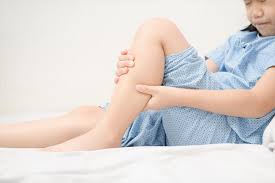Growing pains – bones and muscles don’t hurt when growing
Growing pains, also known as (benign nocturnal pains of childhood) is characterised by pains in the legs in children, most typically in the evenings or nighttime.
There is no evidence that bones or muscle hurt when they are growing!
The medical literature is uncertain about the cause of this problem, and has several theories, all unproven.
It is my experience that there is often resolution of this issue in a high percentage of children after identification of sacral dysfunction (“subluxation”), leading to a theory that the cause is referred pain in the sensory nerves.
This is supported by one study looking at altered somato-sensory impulses in children with growing pain.
Importantly, any pain in children should not be ignored, especially pain that wakes a child at night.
Growing pain is usually intermittent (comes and goes), bilateral, and usually is located in the thighs, and below the knee.
Any pain that is one sided, constant, or localized to a joint, may indicate a different condition.
Growing pains should also be differentiated to restless leg syndrome.
Growing pain is very common, affecting 10-20% of children. Sacral subluxation is also quite common, resulting from typically and frequency childhood bumps, twists and falls, often unseen. The only way to know if a Pelvis or sacral subluxation is present is to have a check-up.
Whilst growing pains is often considered benign, evidence suggests the symptoms may continue, or may change to abdominal pain of headaches over time, suggesting other processes involved. Interestingly, sacral subluxation can cause headaches and abdominal pain.
Studies have also linked growing pains to children with lowered pain thresholds, lower bone strength, and lower calcium levels.
The pain should not be dismissed and a check-up should occur to identify any causes of the pain.
References
Available on request




